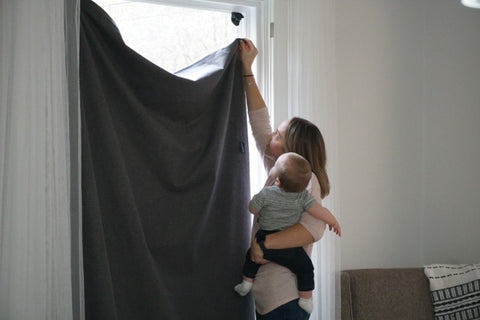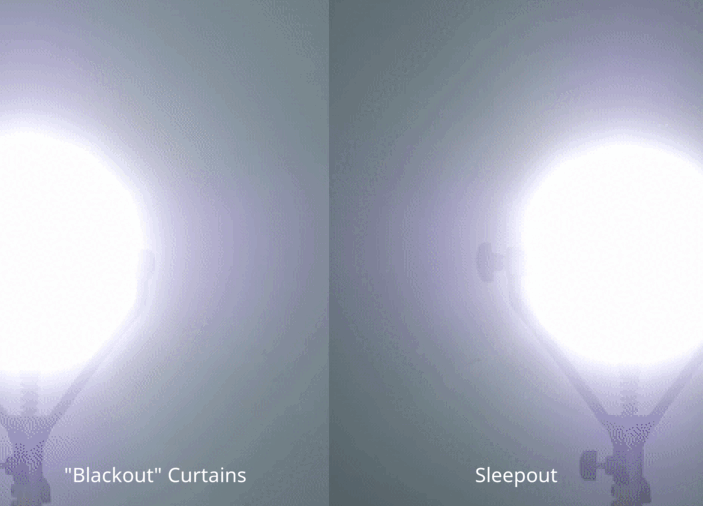Contact napping, the practice of holding or cuddling your baby during their naps, has emerged as a popular solution to improve baby sleep quality, emotional bonding, and reduce separation anxiety. Contact napping provides numerous benefits for both babies and parents, fostering improved sleep quality and enhanced emotional bonding. We will discuss the benefits, stages, and recommendations for contact napping, as well as address common concerns and misconceptions.

Is it OK to do Contact Naps?
Many parents wonder if contact napping is a healthy and acceptable practice, often concerned that it might create dependency or disrupt their baby's ability to sleep independently. However, research and expert opinions overwhelmingly support the idea that contact napping can provide numerous benefits for both babies and parents, especially during the early months of a baby's life. For babies, contact naps promote a sense of bonding and emotional security, which are crucial for their overall well-being and development. The physical closeness during contact naps also aids in regulating the baby's heart rate, breathing, and body temperature, further supporting their growth and comfort.
Benefits of Contact Naps for Your Baby's Health
-
Improved Baby Sleep Quality: Properly done, contact napping can enhance the quality of your baby's sleep.
-
Enhanced Emotional Bonding and Attachment: Contact napping promotes stronger emotional bonds between parents and babies.
-
Reduction in Separation Anxiety: Regular contact naps can help reduce separation anxiety in babies.
-
Better Mood for Both Baby and Parent: Contact napping can contribute to improved mood and reduced stress for both the baby and the parent.
-
Long-Term Benefits: Babies who experience regular contact napping often show signs of improved cognitive development and emotional resilience later in life.
Contact Napping 3-6 Month Old
During the 3-6 month age range, your baby will experience various developmental milestones that affect their sleep patterns, such as longer stretches of sleep, increased alertness, and the beginnings of a more predictable sleep schedule. At this stage, contact naps can be particularly beneficial, as they can help your baby feel secure while adjusting to these changes. To ensure successful contact napping, consider the following tips:
- Create a consistent sleep routine and environment. A routine might involve a regular naptime schedule, a calming pre-nap ritual, and consistent sleep cues like dimming the lights or using white noise.
- Gently rock or sway your baby in your arms while humming or singing softly to help them feel calm and relaxed. The rhythmic motion and familiar sounds can provide a soothing sensory experience that encourages sleep.
- Be mindful of your baby's sleep cues and respond promptly to their need for rest. Overly tired babies may have difficulty settling into contact naps, so it's essential to create an environment conducive to sleep before they become overtired.
- Experiment with different contact napping positions and techniques, such as using a baby carrier or wrap, to find what works best for you and your baby.
Contact Napping 6-9 Month Old
As your baby reaches the 6-9 month age range, they will continue to develop, and their sleep patterns may change. They may start consolidating their naps, and their awake periods will become longer. It's essential to adjust your contact napping strategies to accommodate these changes. Some potential challenges at this stage include increased mobility and distractibility, as well as the emergence of separation anxiety. To address these challenges, you may need to:
- Experiment with different holding positions that provide your baby with a sense of security while allowing them some freedom of movement.
- Introduce calming techniques, such as baby massage or white noise, to keep your baby relaxed during contact naps.
- Be patient and flexible, as your baby's needs may continue to evolve during this stage, and it may take some trial and error to find the most effective contact napping strategies.
Contact Napping 9-12 Month Old
Between 9-12 months, your baby will likely begin to develop more independent sleep habits, as they start to understand and anticipate daily routines and develop better self-soothing skills. At this stage, you can gradually reduce contact naps while maintaining a secure and comfortable sleep environment. To support this transition, consider the following suggestions:
- Encourage your baby to self-soothe by offering a comfort object, such as a blanket or stuffed animal, during naps. This will help them develop a sense of security independent of physical contact.
- Allow your baby to explore and practice their newfound independence during awake periods, so they feel more comfortable and confident when it's time to sleep on their own.
- Be prepared to offer extra reassurance and support during this transition, as your baby may experience some initial resistance or anxiety when adjusting to independent sleep. Remember that patience and consistency are key in helping your baby develop healthy sleep habits.
How Often Contact Napping is Recommended
The suggested frequency of contact naps varies based on your baby's age and individual needs, taking into account factors such as temperament, growth spurts, and any unique circumstances that may impact their sleep requirements. While some babies may benefit from daily contact naps, others may only require them occasionally, depending on their comfort level and how they respond to this form of sleep support. It's essential to strike a balance between contact napping and independent sleep, as both are crucial for your baby's development and overall well-being.
When to Stop Contact Napping
As your baby grows and develops, you may notice signs that they are ready to transition away from contact napping. These signs may include increased interest in exploring their surroundings, a willingness to self-soothe, and longer stretches of independent sleep without needing your physical presence. To ensure a smooth transition, gradually reduce contact naps while offering more opportunities for independent sleep, such as placing your baby in their crib or bassinet for naps and nighttime sleep.

Good Sleep, Happy Baby
Contact napping can offer numerous benefits for both babies and parents, including improved sleep quality, enhanced emotional bonding, and a reduction in separation anxiety. By understanding the stages of contact napping and adjusting your approach to suit your baby's unique needs, you can create a nurturing sleep environment that fosters healthy development.
It's essential to trust your instincts as a parent and consider your baby's individual needs when implementing contact napping. Creating a comfortable and consistent sleep environment plays a significant role in promoting healthy sleep habits. To give your baby the best possible sleep environment, consider incorporating the most recommended blackout curtain by sleep specialists in North America, and use code WELCOME10 for $10 off your purchase. Here's to better sleep and happier babies!








